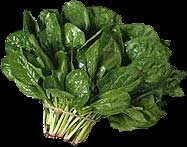
What Is It?
And Where Does It Come From?
Suspected to play a role as a vital nutrient since 1929 and finally isolated in 1939, Vitamin K is a group of three different fat soluble vitamins.
 Vitamin K1 (phylloquinone) is a natural form created and derived from green plants. The second form (menaquinone, vitamin K2) is another natural form made by animals and intestinal bacteria. Vitamin K3, the third form, is a synthetic that goes by the names menaphthone or menadione.
Vitamin K1 (phylloquinone) is a natural form created and derived from green plants. The second form (menaquinone, vitamin K2) is another natural form made by animals and intestinal bacteria. Vitamin K3, the third form, is a synthetic that goes by the names menaphthone or menadione.
Vitamin K3 is manufactured in a fat-soluble form that is roughly twice as potent as phylloquinone as well as a water-soluble form.

What Does It Do?
And What Scientific Studies Give Evidence To Support This?
Back in 1929 when researchers first discovering vitamin K, it was found that chickens eating a diet containing only the essential nutrients (consequently devoid of vitamin K) developed hemorrhagic disorders. Ten years later when the vitamin was isolated, then established its role in proper blood clotting.
Vitamin K plays this role by functioning in the creation of prothrombin and other proteins vital to blood clotting. Vitamin K is also involved in the creation of thrombin (a protein of importance in blood clotting) from prothrombin.
Vitamin K is also important in bones as it is necessary for the conversion of osteocalcin to its active form. This regulates the function of calcium in bone turnover as well as mineralization.
Vitamin K aids in keeping bones, teeth and cartilage healthy as it is necessary for the function of a protein called MGP that is present in all three. Proper kidney function requires vitamin K to produce a urinary protein which inhibits the formation of calcium oxalate kidney stones.

Who Needs It?
And What Are Some Symptoms Of Deficiency?
Deficiency is actually quite uncommon for anyone taking in a fairly balanced diet. However, it can develop in persons not eating green vegetables or those taking medicine that may interfere with the growth of intestinal bacteria which produce vitamin K2.
Deficiency is also a risk in those suffering from prolonged diarrhea, obstructive jaundice, liver disease or malabsorption problems. Deficiency symptoms include a prolonged time till blood clotting, easy bleeding and bruising, blood stained urine and bleeding from the gut. Newborns and elderly are especially susceptible to deficiency.

How Much Should Be Taken?
And Are There Any Side Effects?
To forego the problems of deficiency it is important to get at least the RDA for vitamin K which is 1mcg per kg of body weight. It also assumed that half of this amount comes from intestinal bacteria so you may have to adjust food intake if you are on antibiotics. An easier way to think of it is 80mcg for men and 65 for women.
However, if you are an active training athlete the RDA is more than likely not enough for you and that is why athletes should follow the PDI or Performance Daily Intake. The PDI for men and women is 80 to 180 mcg. The estimated safe range for adults consuming vitamin K is 80 to 600 mcg per day.
Overdose of vitamin K is uncommon and even excessive intake for extended periods of time has not readily resulted in toxicity. Excessive doses have been recorded to cause hemolytic anemia (separation of hemoglobin from red blood cells) in lab rats as well as infants.
The synthetic water-soluble vitamin K3 (menadione) has a wider margin of safety than do the other fat-soluble forms either synthetic or natural. Also, high intakes of vitamin E and A may lead to increased risk of hemorrhage as they have antagonistic actions towards vitamin K. Vitamin K supplements can interfere with the actions of anticoagulant drugs such as warfarin (aka, rat poison).
 Where can I get it?
Where can I get it?
 Vitamin K can be found in a very wide variety of foods. The best sources are dark leafy vegetables such as broccoli. 1/2 cup of chopped, cooked broccoli yields 200 mcg of vitamin K; more than enough to reach your RDA or PDI.
Vitamin K can be found in a very wide variety of foods. The best sources are dark leafy vegetables such as broccoli. 1/2 cup of chopped, cooked broccoli yields 200 mcg of vitamin K; more than enough to reach your RDA or PDI.
Vitamin K1 and K3 (menadione) are the forms commonly used in supplements. The best is to find supplements that contain a mixture of both forms.
Sources:
F. Balch and A. Balch. A-to-Z Guide to Supplements.
New York: Avery Publishing Group, 1998.
Gastelu and Hatfield. Dynamic Nutrition for Maximum Performance.
New York: Avery Publishing Group, 1997.
Mindel, Earl. Earl Mindel?s Vitamin Bible.
New York: Warner Books, 1985.
Nicola Reavley. The New Encyclopedia of Vitamins, Minerals, Supplements, and Herbs.
New York: M. Evans and Company, Inc, 1998.
